
- Scientific Name: Petaurus breviceps
- Price: Prices start at around 150 Australian dollars
- Diet: Omnivores who love insects, plants, fungi, fruits, seeds, sugary sap, gum, and bird eggs
- Lifespan: 9 years in the wild, 12 to 17 in captivity
- Classification: Mammalia
- Habitat: Rainforests and coconut plantations of eastern Australia, New Guinea, and Tasmania
- Weight: 4 – 5 ounces
- Size: 12 to 13 inches long (including tail)
- Mobility: Can climb, crawl, and glide
- Conservation Status: Not endangered
- Species: Sugar Gliders are Nocturnal Marsupials
- Diet: Sugar Gliders Have a Very Sweet Tooth
- Ability: Sugar Gliders Can’t Actually Fly
- Talent: Sugar Gliders Have Amazing Aerial Control
- Habitat: Sugar Gliders Almost Never Touch the Ground
- Habits: Sugar Gliders Personalize Their Nests
- Communication: To Sugar Gliders, Scent is Everything
- Social Structure: Sugar Gliders are Very Social Creatures
- Dexterity: Sugar Gliders Have 2 Sets of Hands
- Growth: Sugar Glider Babies Grow Quickly
- Sugar Glider Societies are Run by 2 Males
- Sugar Glider Dads are Very Loving
- Sugar Gliders Do Things in Twos
- Sugar Gliders Make Excellent Pets
- Sugar Gliders Need a Lot of Attention
Sugar Glider Facts Infographics
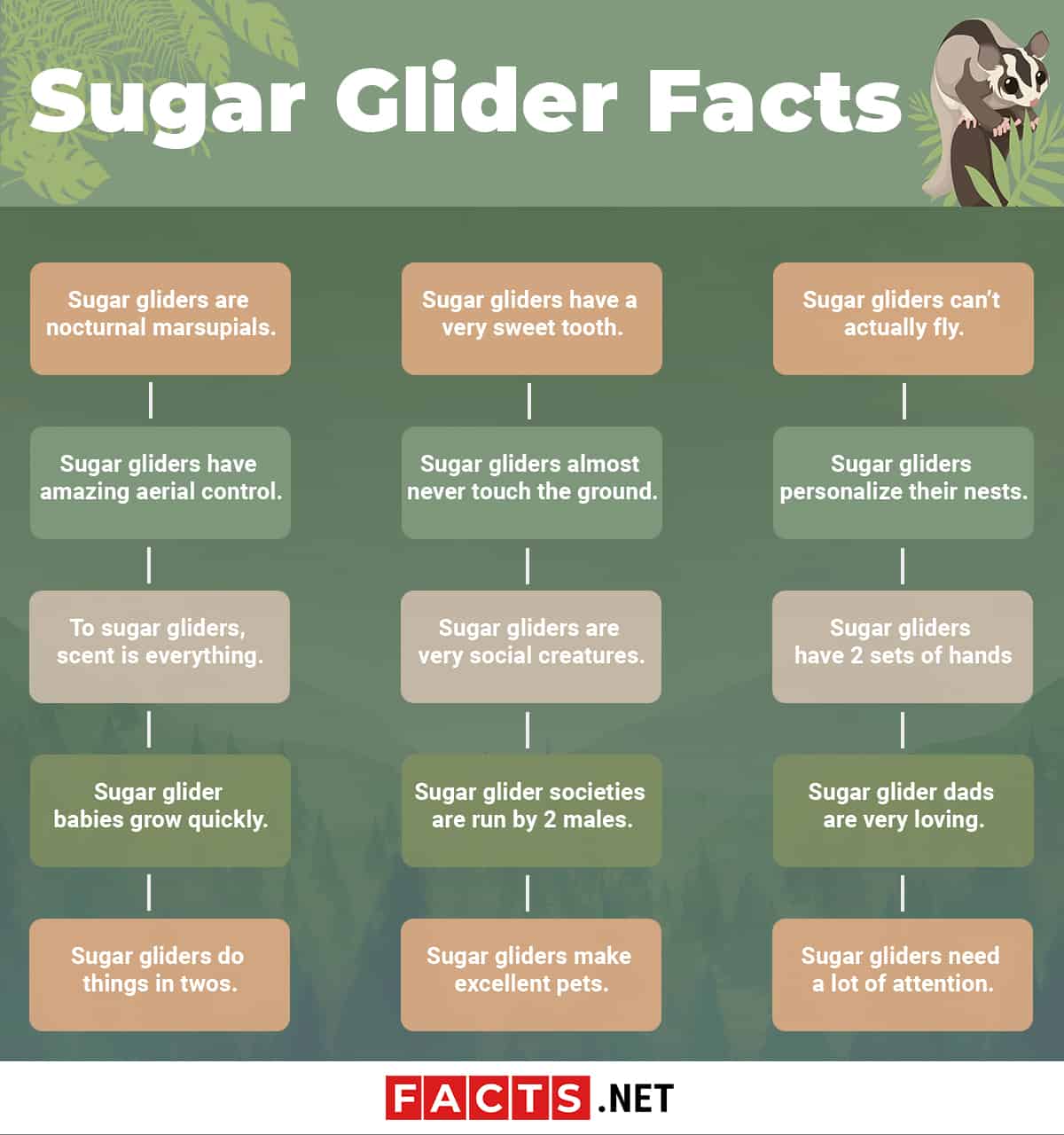
Sugar Gliders are Nocturnal Marsupials
The first of our sugar glider facts is that they’re a nocturnal breed of marsupial, similar to kangaroos in that their females have pouches in which they carry and suckle their young. They’re a lot smaller than kangaroos, however, and look very much like squirrels. Despite the resemblance, sugar gliders are not actually related to squirrels, but come from a completely different family. Their scientific name translates into English as “short-headed rope dancer” and they got this name because they can do incredible acrobatics in trees and in flight.
Sugar Gliders Have a Very Sweet Tooth
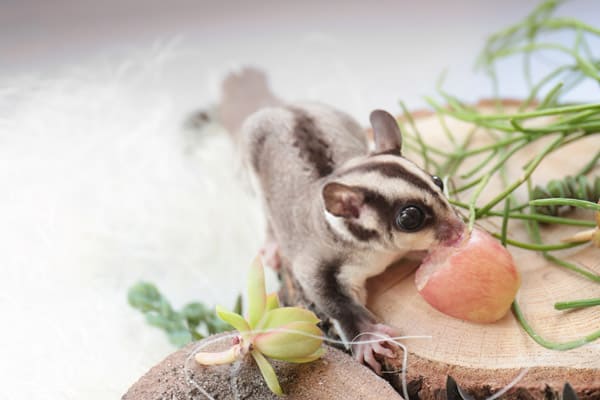
Although they’re omnivores who can eat pretty much anything, sugar gliders prefer sweet foods. Their favorite foods include nectar, honey, honeydew, sap, and acacia gum. To get sap, they will remove the bark of trees and bore holes into the trunk to drink the liquid gum. While they can get half of their water needs from rainwater, the other half comes from the foods they eat. For balanced nutrition, they also supplement their diet with vegetation, eggs, insects and worms.
Sugar Gliders Can’t Actually Fly
Another of our sugar glider facts is that they’re named after both their diet and the unique way in which they move. These creatures live in the branches of trees, and, while they can certainly walk and crawl, they also like to glide from branch to branch like flying squirrels. They can’t actually fly, though, despite how it might look when you see them soaring between trees. Rather, they spread their arms to expose their membranes as they glide through the air – so it was sugar gliders and flying squirrels who inspired the invention of the wingsuit!
Sugar Gliders Have Amazing Aerial Control
Sugar gliders are admired for their aerodynamic skills, which are certainly impressive. A full-grown adult can glide as far as 150 feet, losing about 3 feet in height for every 6 feet travelled. By moving their arms, bodies, and tails, they can change direction, speed, and angle, making sure they always land where they need to. This allows them to catch insects in flight. Since they don’t actually flap their membranes like birds do their wings, they use less energy when in flight.
Sugar Gliders Almost Never Touch the Ground
In the wild, sugar gliders spend most of their time up in the canopy of trees, which is their natural environment. Staying up there protects them from bigger predators on the ground, which is why they rarely ever make landfall. To get from tree to tree, they’ll leap and glide, minimizing the risk of attack from creatures on the ground. They make their nests in the holes of old trees, which they either find ready-made, or create themselves.
Sugar Gliders Personalize Their Nests
Sugar gliders are extremely sociable creatures who live in groups. Despite this communal lifestyle, each one likes to have its own separate home, called a nest. Each nest contains either a lone creature or an entire family. To make sure that everyone in the group knows who owns and lives in which nest, each sugar glider will pee in its home. Since the smell of each sugar glider is unique, like a thumb print, the smell of their urine acts like a personal address.
To Sugar Gliders, Scent is Everything
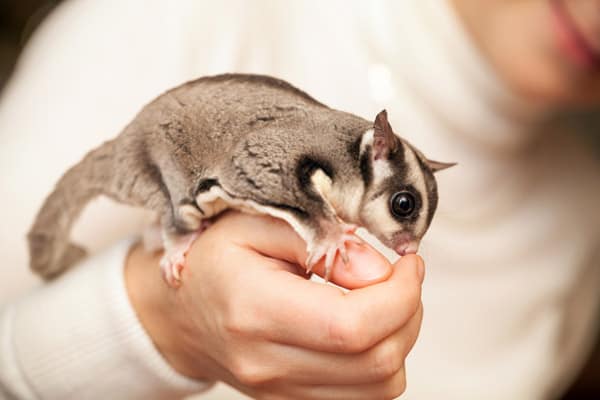
Sugar gliders use smell in the same way that we use language, writing, and signs. They don’t just use urine to mark their territories, however. They also use saliva and scent produced from their foreheads and chests to get their messages across. They understand their social hierarchy because of their scent, and all within each nest knows who’s who. You can also tell the males apart from the females because males have a bald spot on their heads, which is their scent gland.
Sugar Gliders are Very Social Creatures
Although some sugar glider species are solitary creatures, the vast majority are incredibly social. These creatures can live together in groups of between 15 and 30 family members, sometimes more. As many as seven of these will be adults, while the rest will be children. And though each family raises and cares for their own young, they also help each other. Sugar gliders will feed and protect the children of their neighbors, and welcome help from others in their group.
Sugar Gliders Have 2 Sets of Hands
Sugar gliders actually have two hands and two feet, but because their feet are so incredibly dexterous, they give the impression of having four hands. Since these creatures live in trees, they’re like monkeys in that their hands and feet are made up of four fingers with opposable thumbs. What this means is that their feet can act like hands. Each finger is also topped by hook-like fingernails which allow them to climb trees, clothes, rough walls, and even people.
Sugar Glider Babies Grow Quickly
It takes baby sugar gliders 15 to 17 days to come out of their mothers’ wombs, after which they’ll crawl into her pouch. Since they’re furless, they have to stay there for 60 days for warmth. They’ll open their eyes after 80 days, after which time they’ll leave their mother’s pouches for short periods. After 110 days, they can leave the nest. In southeast Australia, babies are born from June to November. In the north, they’re born all year because it’s warmer.
Sugar Glider Societies are Run by 2 Males
Unlike in other species, where groups tend to be dominated by a single male, sugar gliders like to do things differently. Two males usually rule the nest. This duo do not compete with each other, however. They actually cooperate when it comes to managing the nest, and they don’t fight. Together, they will dominate the other males, though fights are rare. They’ll also share responsibilities, nests, and the rearing of each other’s children. It’s believed this increases the nest’s chances of survival.
Sugar Glider Dads are Very Loving
One of the most curious of our sugar glider facts is that their males make great fathers. Not only do they take an active role in child care, but the dominant males become even more involved than the rest. When it gets cold, one will stay with the young to keep them warm, while the other goes out to hunt. This is necessary because sugar glider children can’t produce much body heat of their own until they’re at least 100 days old.
Sugar Gliders Do Things in Twos
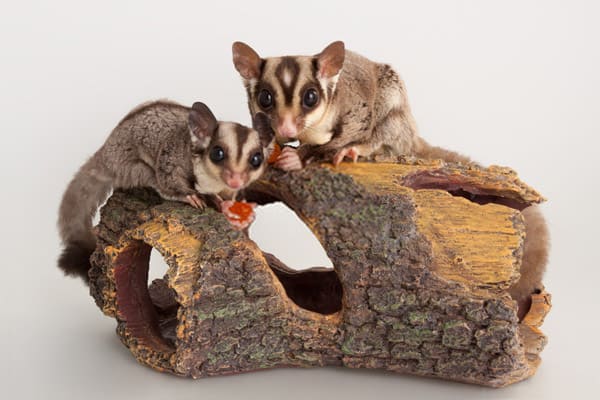
Besides the unique practice of having two males dominate a nest, sugar gliders really have a thing for the number two. One of the less well-known of our sugar glider facts is that females have two openings in their pouches. They also breed twice a year (depending on the climate and living conditions), and can have two children with each birth. Females also have two uteri, so to meet their needs, the males have penises that split in two.
Sugar Gliders Make Excellent Pets
Perhaps the most well-known of our sugar glider facts is that they make great pets, so long as you take good care of them. They need to be kept in special bags that are hung to simulate their mother’s pouches, and shouldn’t be let out often. They must also bond with their masters, so you need to keep them next to you so they’ll get used to your smell. Depending on where you buy them from, they generally cost about Aus$150 or more.
Sugar Gliders Need a Lot of Attention
Because they are extremely social creatures, sugar gliders need a lot of attention and grooming. If you can’t spend too much time with one, try to get two sugar gliders at the same time. It’s best to get two of the same gender to keep them from producing children. It isn’t a good idea to get a mature sugar glider as a pet, because they have a hard time socializing with people and other creatures they’re not familiar with.
Sugar Glider Facts – Facts about Sugar Gliders Summary
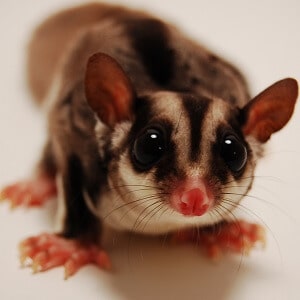 Sugar gliders love sweet things and they famously glide from tree to tree like flying squirrels. In the wild, they live for around nine years, but in captivity, they can live for as long as 17 years, so long as they are properly taken care of. They have a unique social structure dominated by two males who share responsibilities evenly. They’re extremely sociable creatures, making them great pets, but they need a lot of care and attention. They also have to be adopted as babies because they have a hard time bonding with others when they’re older.
Sugar gliders love sweet things and they famously glide from tree to tree like flying squirrels. In the wild, they live for around nine years, but in captivity, they can live for as long as 17 years, so long as they are properly taken care of. They have a unique social structure dominated by two males who share responsibilities evenly. They’re extremely sociable creatures, making them great pets, but they need a lot of care and attention. They also have to be adopted as babies because they have a hard time bonding with others when they’re older.
Was this page helpful?
Our commitment to delivering trustworthy and engaging content is at the heart of what we do. Each fact on our site is contributed by real users like you, bringing a wealth of diverse insights and information. To ensure the highest standards of accuracy and reliability, our dedicated editors meticulously review each submission. This process guarantees that the facts we share are not only fascinating but also credible. Trust in our commitment to quality and authenticity as you explore and learn with us.
